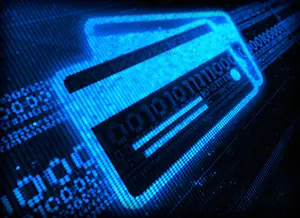
Becoming an Apple Pay Bank: Should You Do It?

Apple Pay launched in October 2014, but its market is limited, for now. It can only be used by iPhone 6 users within retail stores, and within apps for the iPhone 6, iPad Air 2 and iPad mini 3. The process is relatively painless: Consumers add their credit cards to Apple’s Passbook, which stores digital documents like tickets and boarding passes. To pay within a store, the customer holds the iPhone near the retailer’s point-of-sale terminal and authorizes the sale with a secure fingerprint biometric. Apple Pay users surveyed by market research firm Infoscout in December 2014 found paying the Apple way to be more convenient, faster and more secure than swiping a credit card.
As of January 20, 2015, only 54 financial institutions were listed by Apple as participating issuers, representing less than 0.5 percent of the banks and credit unions in the U.S. but 90 percent of credit card purchase volume, according to Apple. In other words, the biggest credit card issuers have signed on. More institutions are expected to follow.
The Apple Pay platform builds on tokenization, which essentially replaces a customer’s credit card number with a more secure identification. Banks and retailers have been working toward this as the industry shifts to EMV standards to address cybercrime. The adoption of Apple Pay at $118-billion asset Regions Financial Corp. was due in part to this shift. “To be able to put tokenized transactions in place in a digital wallet, [Apple Pay] aligns underneath our EMV strategy,” says Tom Brooks, head of retail products at Regions.
Payment processors play a key role in making Apple Pay a reality for community banks. First Data takes partner institutions through the process, working with Apple and other key players—Mastercard, VISA or American Express have to create the tokens for the bank—and reviewing the institution’s policies and parameters for transaction approval, says Stephen Hug, vice president of product management for First Data.
First Data’s role as a facilitator contributed to the speed with which Fremont Bank was able to partner with Apple Pay. For a bank going it alone, “that process will take six months. It took us six weeks,” says Olson.
Will Apple Pay result in a mutually beneficial relationship for the technology giant and its partner banks? Many big retailers are notably absent from Apple’s list of participating merchants, including Wal-Mart and Target Corp. Sporadic adoption by retailers coupled with a limited pool of iPhone 6 users means most consumers still haven’t caught on with Apple Pay. For banks with an expansive customer base or locations in tech-savvy markets, Apple Pay might make sense. At Regions, many customers already used their cards for their iTunes accounts, says Brooks. The Birmingham, Alabama-based bank has not disclosed how many of its customers use Apple Pay.
Fremont Bank’s location near a technology hub meant bank leadership was willing to bet that consumers in its market would be willing to adopt Apple Pay. But adoption has been low, just “a handful of actual transactions,” says Olson. “We’re just babes in the woods on this right now. We’re hoping to continue to talk to our customer base…and try to educate people on the benefits of using Apple Pay.”
Apple keeps a portion of the fee for both debit and credit card transactions, but declined to provide numbers for this story. Zilvinas Bareisis, senior analyst with research firm Celent, estimates those fees to be around 15 basis points for credit transactions and up to 3 cents per transaction for debit. Fremont Bank doesn’t issue credit cards—it partners with First National Bank of Omaha, expected to soon be an Apple Pay partner itself—and costs seem to be low. Fremont Bank paid First Data $5,000 up front to become an Apple Pay bank. Other fees, paid to First Data and Visa, are related to tokenization. Fremont Bank pays Apple half a penny per debit card transaction. Olson estimates that each debit card registered with Apple Pay costs the bank about 13 cents per month, but the bank does not pass those costs on to customers.
One thing’s clear: Banks can’t be on the fence about Apple Pay. If Apple Pay gains traction in the future, banks that are early adopters will likely become the default choice for consumers with multiple credit and debit cards, meaning a big bank credit card will likely trump small banks and their debit cards, if those cards are added to Apple Pay later. For Apple Pay to be successful for banks, it needs to drive more customers to the bank, and banks need to see more transaction volume to make up for the shift from a traditional credit card payment to Apple Pay. Without that increase in volume, income “just moves away from regular plastic cards to mobile and Apple Pay,” says Bareisis. “The bank loses out.”



